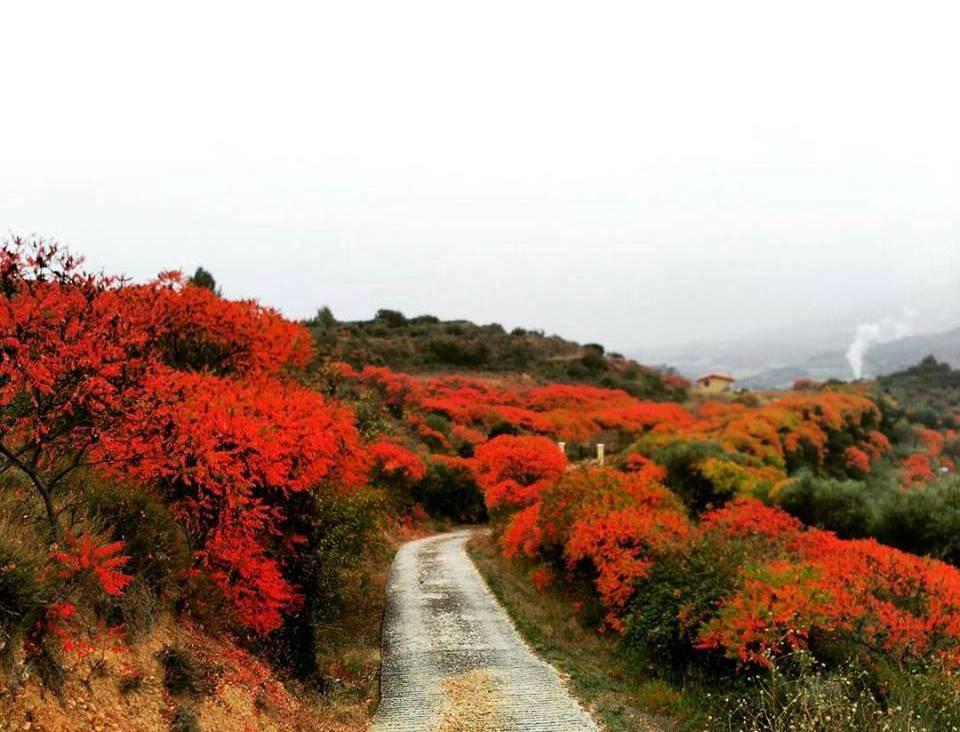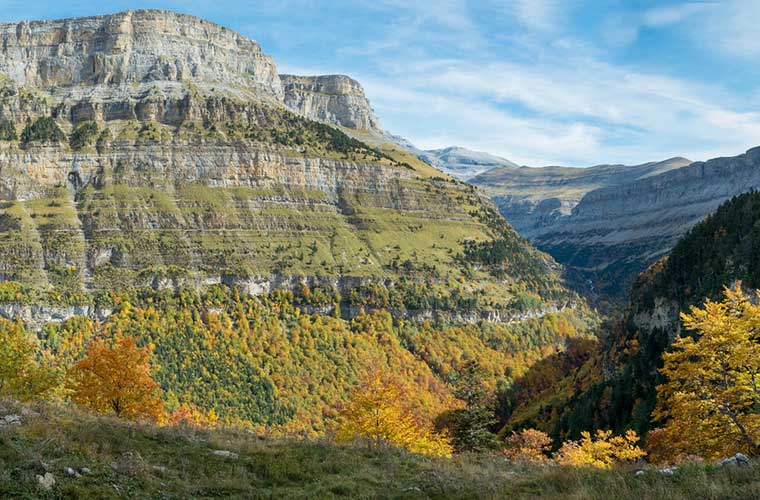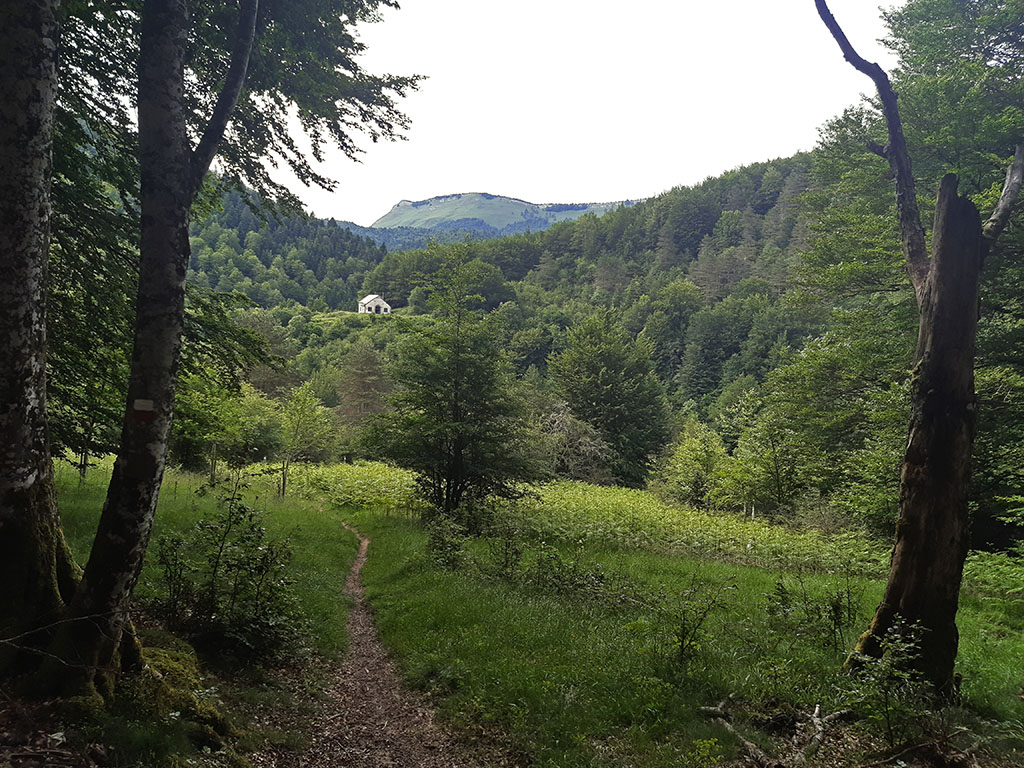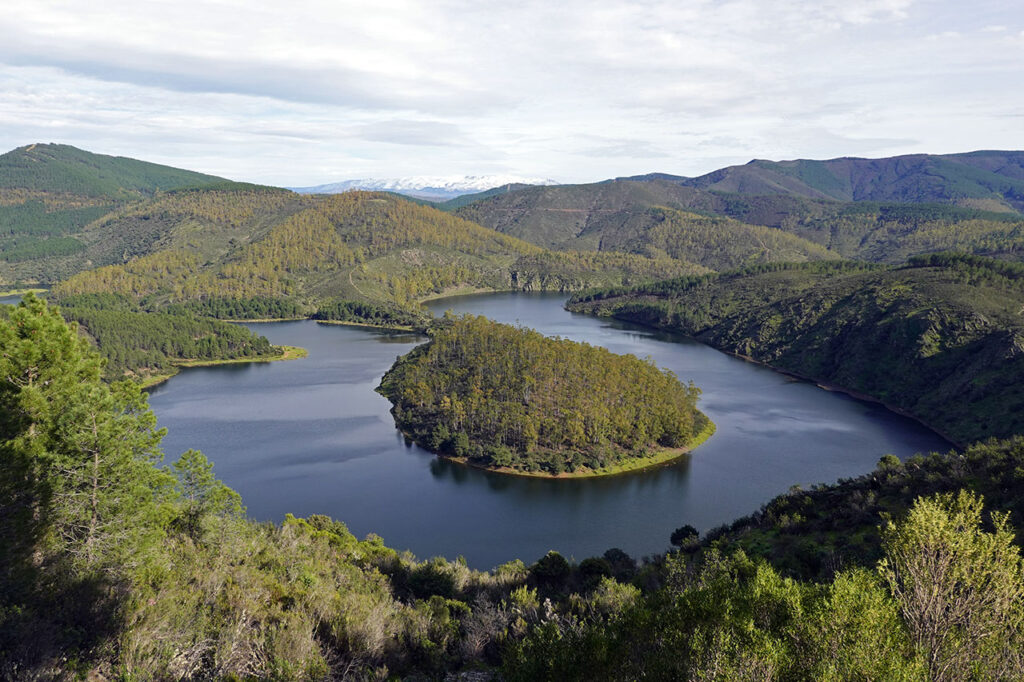6 places to enjoy the autumn in the Central System

Although when talking about the Central SystemAlthough many of us are reminded of the pyrenes and severe landscapes that occupy the higher areas of these mountain ranges, the truth is that the middle and lower parts are covered with an endless forest of pines, holm oaks, junipers, oaks, chestnut trees and even beeches, which extends practically without interruption from the foothills of the Sierra de Ayllón with the Iberian system, to the Serra de la Estrela and the Lousa in Portugal.
As you can imagine, along these 400 km of mountains there are countless places to enjoy the dry leaves and the colours of autumn. We have chosen these 6 places, just a small sample of what you can find. Enjoy it!
Pedrosa beech forest

In the Central System some of the most southerly beech forests on the European continent are located here, such as those at Tejera Negra (Guadalajara), Montejo (Madrid) and Pedrosa (Segovia). These are relict forests, witnesses of a remote, colder and wetter past, when their presence in these latitudes was much more abundant.
The Pedrosa beech forest is located very close to the Puerto de la Quesera, on the northern or Segovian side of the Sierra de Ayllon. It covers an area of 87 hectares and grows at an altitude of between 1500 and 1700 metres, occupying the upper reaches of the Riaza river and the Avellano stream.
Some people leave their car on the side of the road, just before the top of the pass, and simply drive into the forest. Our recommendation is, if you want to do a route, to park much further down, in the car park of Prado Acero. Almost at the end of the Riofrío reservoir there is a path that runs alongside the river Riaza and crosses a magnificent oak grove. The beech forest begins at the confluence of the Avellano stream and the Riaza river. Along the valley of the Avellano stream the path continues to the Quesera pass; there is no path along the Riofrío pass, although it is not difficult to walk through the forest until you reach the road near the top of the pass (not recommended if you are travelling with children). Combining the two options will give you an almost circular route of about 10 km and 400 metres of elevation gain.
Dehesa Bonita de Somosierra

The Dehesa Boyal or Dehesa Bonita of Somosierra is one of the most beautiful wooded areas in the community of Madrid. A forest more typical of the north of the peninsula. It is a perfect place to visit at any time of the year, although autumn is its most splendid time, when the oaks, mustards, birches, hazelnut trees and other species in the forest turn their leaves into the ochre colours we love so much.
In the meadow there are also several unique trees catalogued: two birch trees, a holly tree and two mustard trees. A small botanical jewel just a stone's throw from the capital.
To visit the Dehesa Bonita we will go to the Puerto de Somosierra. If you go by car, you can park it one kilometre from the top of the pass, direction Madrid, just in front of the road that will take you to Fuentefria and the viewpoint. Going along this road we can take a short detour to the dehesa stream to walk for a while along its bank (very beautiful) and visit the singular trees that we mentioned before, the two birch trees, the holly tree and the two mustard trees.
A more mountainous route that crosses this forest and passes by the Litueros waterfall, is this one to Cebollera Vieja (2.128m).
Castañar del Tiemblo

In the southeast of the province of Avila, almost touching the province of Madrid, the northern slopes of the Gredos mountain range are home to the Valle de Iruelas Nature Reserve and its famous chestnut grove of Tiemblo.
The Iruelas Valley is a natural treasure of 8,828 Ha declared a Special Area of Conservation (SAC) and Special Protection Area for Birds (SPA) since 1991. It extends along the right bank of the Alberche, from the 1,959 metres of the Cerro de la Escusa to the 730 metres of the Burguillo reservoir. Its most precious jewel is the Castañar del TiembloThe forest has several hundred-year-old specimens, some with their own name (El Abuelo, del Codao, del Resecadal), scattered throughout the forest.
Surrounding the chestnut grove are oak forests, some giant specimens of Scots pine and limber pine interspersed with chestnut and oak trees, or the extensive pine groves of resin pine in the lower part. Above, some repopulations of Scots pine, broom pine and mountain meadows dominate the landscape.
Because of its proximity to Madrid and because it really deserves it, the chestnut grove of El Tiemblo is very popular in autumn. Those who can, would do well to go during the week.
To visit it, a good option is to follow the Senda del Castañar (PRC-AV 54)It is about 5 km long. It starts at the El Regajo car park. Along the route, we will visit the most important specimens and we will have a real forest bath.
A more mountainous route that crosses the Tiemblo chestnut grove is this one to the peak of Casillas or Alto del Mirlo (1.768m).
Path of the Chestnut Trees in Puerto Bejar

On the western slopes of the Sierra de Béjar, next to the town of Puerto de Béjar, and just a stone's throw from the A66 motorway or Ruta de la Plata, we find the "Senda de los Castaños", a beautiful fairytale path between chestnut trees, stone walls, streams and mosses.
If you want to do it, we recommend this circular route of just 5km, ideal for children. It starts in Puerto de Béjar. You can leave the car at the lower part and cross the village until you come out at the top. The path starts a little further up, after passing a large basin with a fountain, in a sharp bend on the left-hand side of the road that leads to La Garganta. From here the path is all downhill until it reaches the greenway. This is the most beautiful stretch. The return along the greenway is a pleasant walk.
Hervás - Ambroz Valley

The Ambroz valley is a natural region located in the north of Cáceresbrimming with nature and history. If you are visiting for the first time, don't miss the chance to discover some of its treasures: the Jewish quarter of Hervás, the Roman baths of Montemayor, the Roman Vía de la Plata, or Granadilla, an ancient walled town that was vacated in the mid-20th century for the construction of a reservoir.
Although the Ambroz is ideal to visit at any time of the year, if we have to choose a time of year, we would choose autumn, when the chestnut forest is at its best and the villages organise a multitude of activities as part of the Otoño Mágico (Magic Autumn) cultural programme.
Hervás, the most populated municipality in the valley, is its administrative and commercial centre, and an unbeatable place to set up our base camp. Several routes start from here, such as the three that the tourist office recommends through the chestnut grove and the Duque chestnut grove (3, 9.4 and 15 km); the Ambroz Forest Route, between La Garganta and Segura de Toro, passing through Hervás (24 km); and the route to La Chorrera and Charcas Verdes (7.5 km from the Horcajo dam car park or about 14 km from Hervás).
A more mountainous route that passes through oak forests and visits the Chorrera and Charcas Verdes is the ascent to the Pinajarro (2.099m) from Hervás.
Chestnut grove of O'Soitu in San Martín de Trevejo (Sierra de Gata)

The Sierra de Gata complete together with La Vera, Jerte, Ambroz and The Hurdesthe mountainous regions of the north of CáceresThe westernmost of these is the one that "borders" with Portugal.
San Martín de Trevejo is one of its most important towns, forms part of the network of Pueblos Bonitos de España and has been declared an Asset of Cultural Interest. Along with Eljas and Valverde del Fresno, here we can hear Fala, a language of Galician-Portuguese origin.
From here the route to the chestnut grove of O'Soitu or chestnut grove of Ojestos (SL-CC 208), the most extensive chestnut grove of Extremadura. Its most illustrious specimens are Los Abuelos, two imposing chestnut trees halfway along the route.
Also of interest is the PR-CC 184 trail or Ruta de la Fala, which goes from San Martín de Trevejo up to the Santa Clara pass and then descends to Eljas and Valverde del Fresno.
Don't miss any adventure in the Pyrenees!




